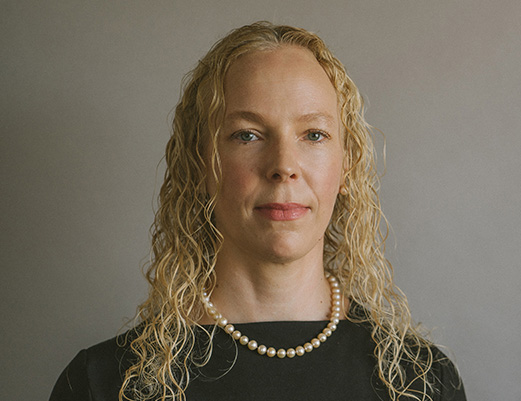Child A and B [2024] EWFC 284 (B) (11 October 2024)
Date: 11 October 2024
Barrister/s: Zoë Saunders, Georgina Swinglehurst
Area/s of law: Family & Divorce, Children Private Law
- Home
- >
- Recent Cases
- >
- Child A and B [2024] EWFC...

Search
Sign up to mailings
To keep up to date with our latest news and events, please sign up for mailings.
You are always free to unsubscribe at any time.
In the recent case of Child A and B [2024] EWFC 284 (B) (11 October 2024), in which Zoë Saunders, instructed by Alex Wilson of HCR Legal LLP, represented the Father. HHJ Scannell gave guidance with a view to ensuring that the Pathfinder Pilot operates as it should in South East Wales and providing helpful guidance to be followed in any subsequent applications made that fall within the pilot scheme.
In private law children proceedings, the mother (M) appealed an order requiring the children to attend a secondary school in Wales (as sought by the father (F)), as opposed to a secondary school in England, (as sought by M).
The application was dealt with as a Pathfinder case, in accordance with PD36Z. This allows certain applications to follow a procedure different to that specified in the Procedure Rules 2010, which seeks to test a more investigative approach, featuring earlier gatekeeping and information gathering to enable earlier triaging decisions and to front-load engagement with parties rather than engaging through multiple hearings. This pilot scheme has been operating in South East Wales since 29 April 2024.
Procedure
The application was dealt with on the papers at a Gatekeeping 1 hearing (GK1). Preparation of a Child Impact Report (CIR) was ordered, and the case was then listed for a Gatekeeping 2 hearing (GK2), which is a hearing on the papers. The case was allocated to the adjudication track, to be heard before the lay justices and with a final Decision Hearing to take place at a family court in South East Wales. Directions were made for the filing of evidence by M and F to include a copy of F’s work rota. The order also made clear that no other document should be filed without the Court’s permission unless filed in accordance with the Rules or any Practice Direction. The case was to be heard on submissions only and the Cafcass officer would not be in attendance. The order contained notice to the parties of an important right to apply asking the court to reconsider the order within 7 days. No applications were made.
Upon receipt, the CIR report recommended for the children to move to the secondary school in England. F’s representatives proceeded to unilaterally write questions to Cafcass (without permission of the court). The Judge considered some questions akin to cross-examination rather than clarification requests. In the absence of a court order, the CAFCASS officer had no obligation to respond but did, however only sending their replies to F’s representatives. M’s solicitors were excluded from the process.
The hearing proceeded without Cafcass being in attendance and on submissions. The lay justices rejected the recommendations of Cafcass and ordered that the children would attend the Welsh school. F appealed this decision.
Grounds of Appeal
F’s grounds of appeal were as follows:
Ground 1: the decision of the Lay Justices was unjust because of serious procedural irregularities in the proceedings in that:-
(a) The Court concluded that it required further evidence yet took no steps to obtain that evidence and provided no reason for its decision not to do so.
(b) The Court departed from the recommendation of the CIR dated 24th July 2024 without good reason.
(c) The Court having identified what it considered to be flaws in the CIR failed to carry out its own analysis, or any proper analysis, of these issues in order to come to its own conclusion.
Ground 2A: The Court’s decision was wrong in fact in that:
(a) The Court failed to place any weight, or any sufficient weight, on general factual matters which were relevant to the proper decision making process.
(b) The Court placed undue weight on general factual matters, which were not relevant to the proper decision making and in any event was not supported by the evidence.
(c) The Court referred incorrectly to submissions made by the advocates.
(d) The Court failed to properly consider the welfare checklist, pursuant to s1(3) of the Children Act 1989.
(e) The decision was inconsistent with the evidence before the Court.
Ground 2B: the Courts decision was wrong in law in that:
- (a)The court failed to consider the welfare checklist.
- (b)The Court failed to consider the parties Article 8 rights.
Decision on Appeal Grounds
Ground 1: It was not possible to identify what the lay justice’s own assessment of the issues were (in relation to the dispute as to the impact of the arrangements impacting time spent with F, as well as the effect of change upon the children) and how that fed into their welfare analysis. In those circumstances a good reason for the departure from the CIR report could not be identified. The lay justices’ dissatisfaction with the report was also not raised until after the parties’ submissions, and the parties’ representatives therefore did not have an opportunity to make further representations as to any issues with the report, which was not part of either party’s case. Each party was deprived of the opportunity to consider whether oral evidence was necessary, whether the Cafcass officer should in fact have been ordered to attend, or whether a CIR2 was required. This amounted to serious procedural irregularity and resultantly M succeeded in establishing this ground of appeal.
Grounds 2A and B: The lay justice’s reasons did not contain any assessment of the impact on the children of the proposal of each of the parents nor any balancing of the strengths/weaknesses. This was sufficient to allow the Judge to conclude that’s grounds 2A and 2B were made out by M without needing to stray into the more contentious and disputed factual aspects. The absence of any consideration of the impact on M and thereby the children was a deficit in the reasons which also led the Judge to conclude that these grounds were successfully made out.
Guidance
The following helpful guidance should be followed in any such future Pathfinder applications:
- The decision to allocate a case to the adjudication track is one taken at GK2 when it appears to the court that the matter is capable of being settled by agreement and when the issues for determination are limited. It is a paper exercise undertaken when the Court has the CIR and any risk assessment in respect of domestic abuse that has been prepared. The parties have no input into the GK2 hearing. Their positions are protected by virtue of FPR 2010 4.3 which allows them to apply within 7 days to vary any order or case management direction so made. Their right to do so is endorsed on the GK2 order.
- If a case is allocated to the adjudication track following GK2, directions will usually prescribe whether the case should be determined on submissions or following oral evidence. If evidence is called, the court may limit its extent (FPR 22) and will clarify whether the CAFCASS officer should attend.
- The GK2 order makes clear that it is only the documents ordered by the court than can be filed without further permission being granted.
- A party seeking to ask questions of the CIR author should apply to vary the GK2 order within seven days (FPR 4.3), specifying the basis of any challenge to the report. The application should seek an order for the author to attend court, or permission to put questions to the author, which must be set out in the application. The applicant should consider whether it is “absolutely necessary” and consistent with the problem-solving approach. The court can then consider whether the report fails to address important issues, which may mean a CIR2 is necessary. The court should also consider the timetable and ensure the procedure adopted is fair. This is of particular significance when, as is so often the case in private law applications, one of the parties to the litigation is unrepresented.
- Judge-led conciliation (which wrongly did not take place in this case) is a significant feature of the adjudication track and an essential component of the decision hearing in the GK2 order and must take place before submissions or evidence is heard, in the anticipation that settlement is possible.
- Deciding that judge-led conciliation is no longer appropriate is a significant case management decision in a Pathfinder case and should be taken only after considering submissions. It will not be enough to submit that the parties are not likely to agree. If the decision is taken, it should be clearly recorded on the face of the order so that the case management decision can be understood.
- If the court does not of its own initiative take the opportunity to conciliate then the parties should draw the court’s attention to the order and invite them to undertake judge led conciliation.
For the full case please see BAILII: https://www.bailii.org/ew/cases/EWFC/OJ/2024/284.html
Case summary by Georgina Swinglehurst, Family Law Barrister. Find out more about Georgina here.
